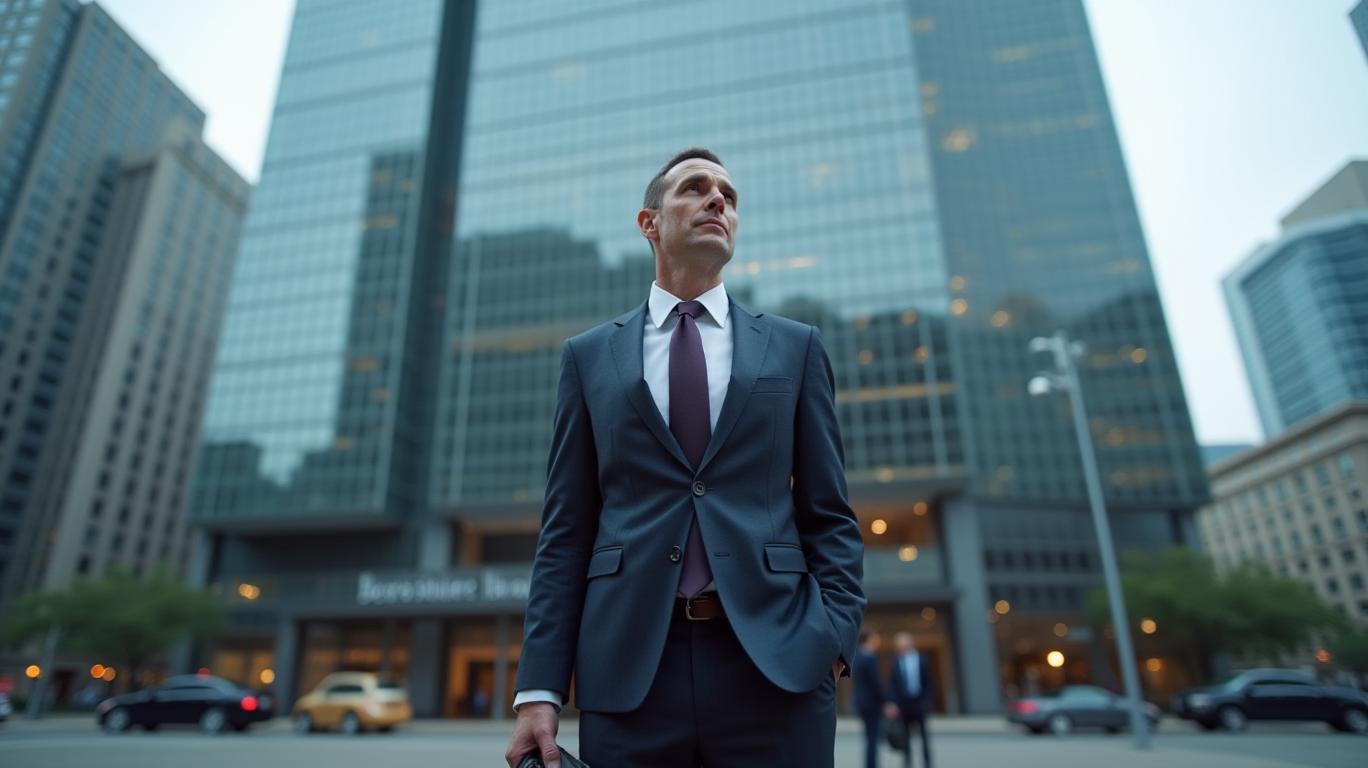Berkshire Hathaway's Transition Under Greg Abel: Navigating the Path to $2 Trillion
The legacy of Warren Buffett casts a long shadow over Berkshire Hathaway, but the baton has now been passed to CEO Greg Abel. As the conglomerate’s market capitalization hovers near $1.085 trillion, investors are asking: Can Berkshire surpass $2 trillion in a market teeming with overvaluation and the weight of its own size? The answer hinges on Abel’s strategic prowess, the law of large numbers, and the company’s ability to defy
in a high-valuations era.The Transition: From Sage to Strategist

Buffett’s retirement marks a pivotal moment. For decades, Berkshire’s success relied on Buffett’s knack for undervalued investments and his aversion to debt. Abel, by contrast, brings a track record of operational excellence, having revitalized railroads and utilities. This transition raises questions: Can Abel replicate Buffett’s capital allocation magic? Or will the shift toward active management of subsidiaries—such as BNSF Railway and Precision Castparts—unlock new value?
The early signs are mixed. Berkshire’s shares outstanding have declined steadily, dropping to 2.159 billion as of March 2025, a 0.08% year-over-year reduction. This reflects continued buybacks, which have historically supported the stock price. However, reveals volatility, with the stock trading between $405 and $540 in 2025. To reach $2 trillion, Berkshire would need a ~84% increase from its current valuation—a daunting climb in a market where even “sure bets” face headwinds.
The Law of Large Numbers: A Titan’s Burden
The $1.085 trillion market cap is no small feat. To double it, Berkshire must grow revenue, earnings, or its price-to-earnings ratio—each fraught with challenges.
- Revenue Growth: Berkshire’s 2025 revenue is $371 billion, but its core businesses—insurance, railroads, and utilities—are mature. Incremental gains depend on acquisitions or operational efficiencies. Abel’s focus on optimizing subsidiaries could help, but the sheer scale of Berkshire’s empire limits the impact of marginal improvements.
- Earnings Momentum: The insurance float remains a cash engine, but interest rates and claims volatility pose risks. Meanwhile, Berkshire’s stock portfolio—exposed to broader market swings—could drag returns in a correction.
- Valuation Dynamics: The S&P 500’s current P/E ratio of ~25 (vs. a historical average of ~15) suggests overvaluation. If markets retreat, Berkshire’s stock—a blend of defensive utilities and cyclical equities—could underperform.
The math is stark: To hit $2 trillion, Berkshire’s revenue would need to grow by ~12% annually for five years—a pace achievable only through transformative deals or breakthroughs in its energy or technology ventures.
Overvaluation and Opportunity
The market’s frothy state creates both peril and possibility.
- Risk: A broad market correction could pressure Berkshire’s holdings, from Apple to Bank of America. Its lack of dividends (yield: 0%) leaves investors reliant on capital appreciation alone.
- Reward: If the market avoids a crash, Berkshire’s cash reserves ($53.3 billion as of 2024) could fuel acquisitions in undervalued sectors. Abel’s operational focus might also unlock synergies in underperforming subsidiaries, boosting margins.
Consider this: Berkshire’s enterprise value-to-EBITDA multiple is ~12x, below its five-year average of ~15x. This suggests the stock is priced for pessimism—a potential buying opportunity if fundamentals improve.
The Case for Action
Investors must weigh three truths:
1. Abel’s track record: His management of Berkshire’s railroads and energy divisions has delivered steady returns. His operational discipline could offset the loss of Buffett’s investment acumen.
2. Buybacks and Share Count: The gradual reduction in shares outstanding—from 2.267 billion in 2021 to 2.159 billion today—has amplified earnings per share. Continuing this trend could boost returns even if revenue growth stalls.
3. Catalysts on the Horizon: Berkshire’s minority stake in Zoom and its investments in cloud infrastructure hint at a pivot toward high-growth sectors. If these bets pay off, they could redefine Berkshire’s trajectory.
Conclusion: A High-Stakes Gamble, but One Worth Taking
Berkshire Hathaway is at a crossroads. The $2 trillion target is not merely a number—it is a testament to Abel’s ability to adapt Buffett’s ethos to a new era. While the law of large numbers looms large, and markets teeter on overvaluation, the company’s fortress balance sheet, diversified portfolio, and operational reinvention under Abel justify cautious optimism.
For investors willing to bet on Berkshire’s resilience, now is the moment to act. The stock’s current valuation offers a margin of safety, and Abel’s strategic clarity could be the catalyst to defy the odds. The question is not whether Berkshire can reach $2 trillion, but whether investors have the patience—and courage—to ride the transition to its conclusion.
The path ahead is steep, but for those who dare to climb, the view from the summit could be extraordinary.

Comments
No comments yet